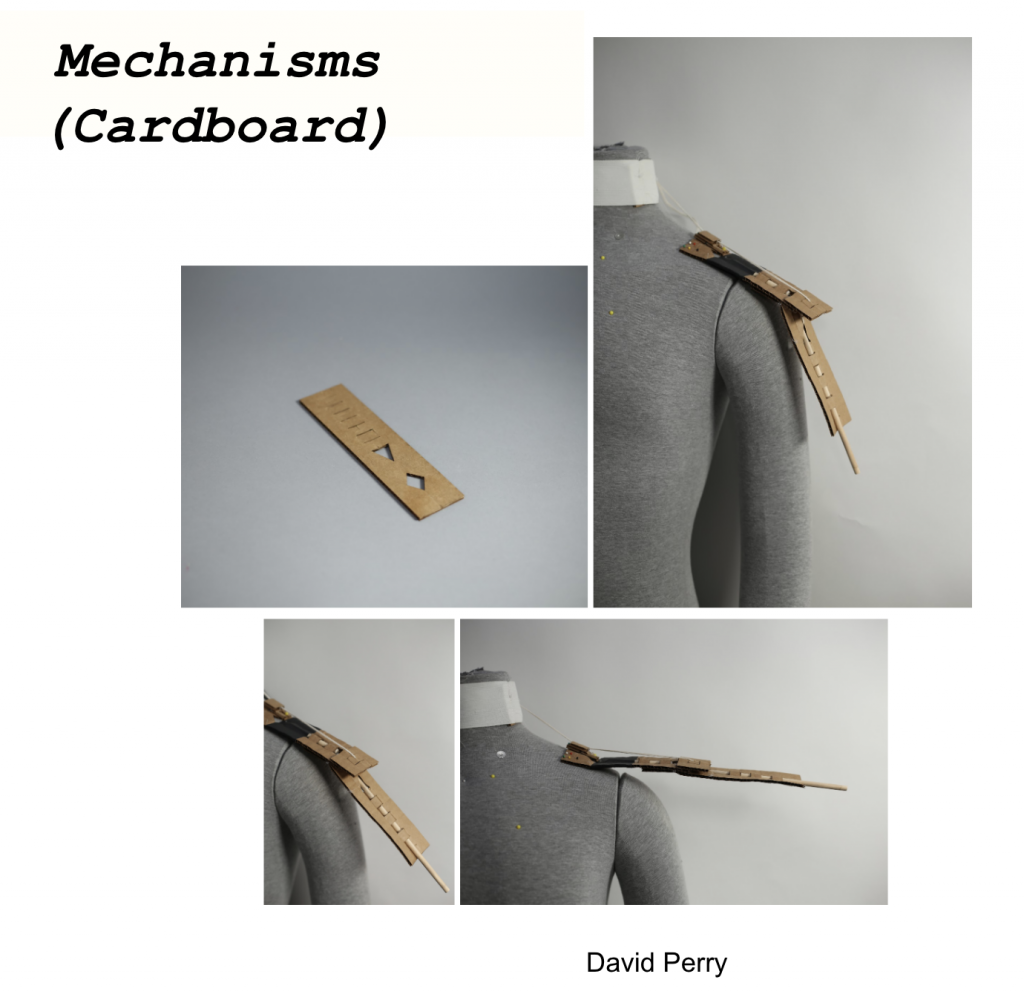Due: Mon, Jan 27 5PM
Cardboard and paper are an excellent materials for quickly mocking up rigid mechanical structures. They can be easily hand-cut, bent, hinged, made more rigid with folds, conform to the body, slotted and laced, torn, frayed – in addition to many other manipulation methods.
For this exercise, we would like you to create three samples that are simple mechanisms that creates a symbiotic relationship with the body. A symbiote, for our purposes, is a mechanism that lives complementarily with another organism. The complementary symbiote moves with the organism but also may have a movement of its own. The symbiote may move mirroring the organism or it might move with an entirely different movement from that of the organism. The symbiote and the organism co-habit in space giving each other additional capabilities – those capabilities may be expressive, exaggerating, practical, uncanny, illogical, divergent, useful.
Your mechanical symbiotes samples should again be short brainstorms that take advantage of a movement your body can make. Play with the materials and build off of that basic movement to create your symbiote mechanism. A few useful techniques: hinging (with crease or tape), four-bar linkages, pulling with string). A few students have began to make mechanisms for their samples for Assignment 1 (examples: Gesture Sample #3, Gesture Extension #3, Sample #3, Samples #1 & #3).
You may also use other materials such as the dowels, zip ties, tape, string, etc.
Deliverables
Please create a short post on the course site with the following:
- Three short video clips (one per sample) showing the movement of the mechanism. The videos should be embedded for direct viewing.
- A brief paragraph outlining your explorations: intended effect, surprises, discoveries, successes.
Examples
Here is an example of one possible sample:

Criteria
Below are the criteria we will be using to assess your assignment. As you are exploring the possibilities for this assignment, keep these criteria in your focus:
- Stay open and go with your discoveries. We are most interested in seeing what you discover that is engaging and is working, not simply an implementation of an idea you have predetermined. For example, you may be trying to execute a specific idea, but along the way you discover something that is much more engaging or works more smoothly than your original idea. Put aside the original plan and go with the new discovery that is actually working.
- Experimentation and creative exploration is more important than refinement. The purpose of this assignment is for you to use your time trying multiple experiments and ideas, rather than perfecting only a few. Your resulting experiments need to work but do not need to be highly refined. Develop your experiments enough so that they are convincing and understandable, but not so much that you get stuck in the details of perfect construction. For now, accept that you are using temporary materials to create your experiments (tape, zip ties, etc.) and that there will still be room for further refinement.
- Make clear documentation. Your online documentation will be how we experience many of your assignments. It is very important that your documentation clearly communicates your projects. Tips: Remove distracting items from the background; make sure your camera is in focus and your lens is clean; use a tripod or other support to stabilize your camera; if you are shooting video, orient your camera in the landscape (horizontal) format; make sure your project is well lit and without distracting shadows.
Leave a Reply
You must be logged in to post a comment.